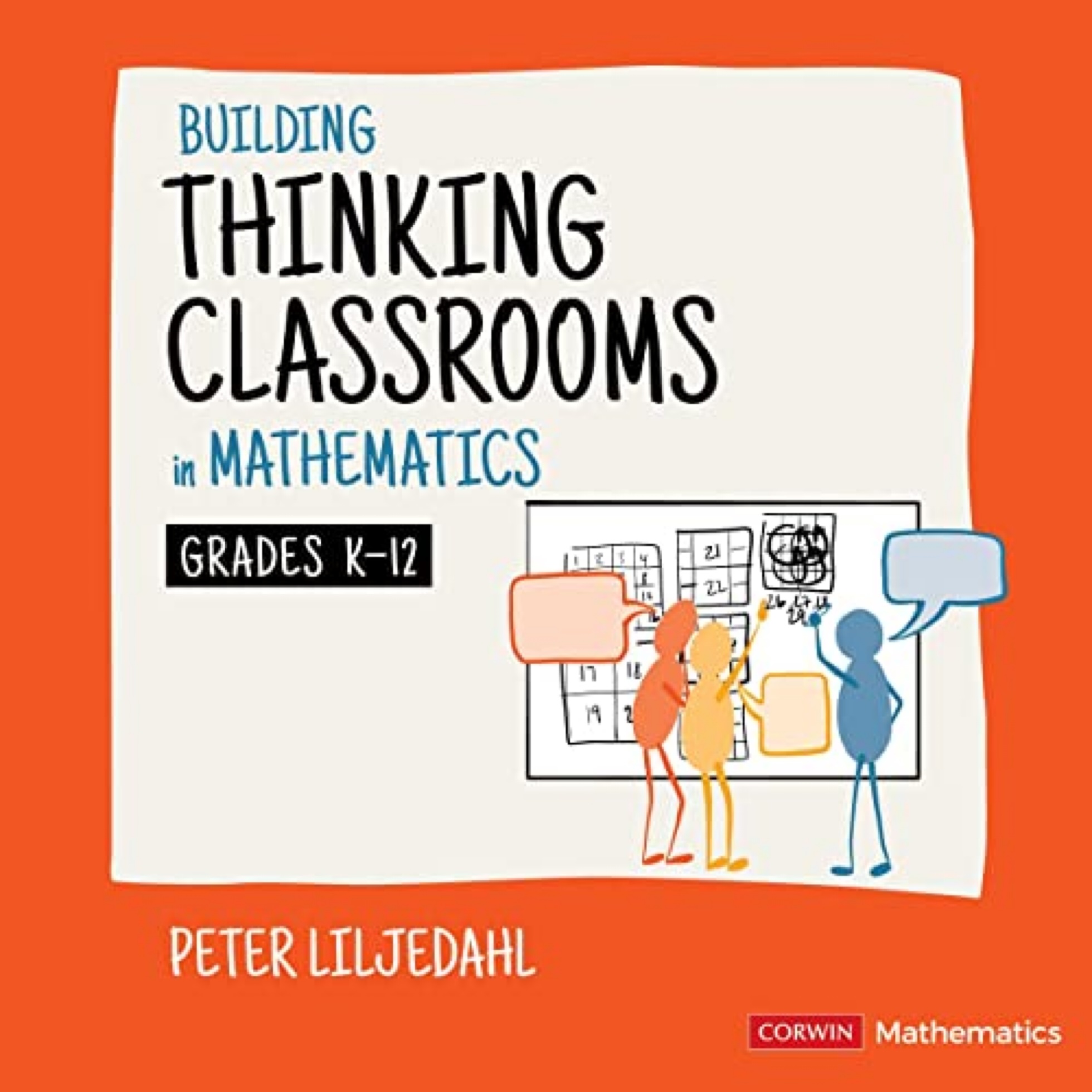
Building Thinking Classrooms in Mathematics Grades K-12: 14 Teaching Practices for Enhancing Learning by Peter Liljedahl offers a whole new way to teach math that gets students thinking rather than mimicking the teacher’s sample problems. The vast research Peter did to discover his new methods is impressive as are student results. Consider having all of your math teachers read this summary and discuss it at a department meeting. Then give each a copy of this trailblazing book.
Introduction
- After observing 40 math teachers in 40 schools, Peter discovered that their practices were pretty much the same and that students spent little or no time doing the right kind of thinking. Unfortunately, the resources and textbooks available facilitated this non-thinking practice, which means that the problem is systemic. He also found that institutional norms were enabling this behavior.
- Over the course of 15 years, Peter and his crew of 400 teachers in teams of 8 to 18 worked on the 14 factors that impact thinking. The factors are represented by the titles of chapters 1 though 14 if you want to know what they are now. In each case they looked at the common norm and tried to do just the opposite. After a lot of trial and error they found the optimal approaches described here. If you want to try their practices, implement chapters 1-3 at the same time. Then you can implement the remaining practices one at a time.
1. What Types of Tasks We Use In a Thinking Classroom
- Problem solving is when we do what we don’t know how to do. It is not the implementation of a well taught algorithm. Students will get stuck, do some thinking, and get unstuck. Routine tasks involve mimicking, which is not thinking. There are examples of tasks here that require thinking. They can be considered non-curricular tasks that do not map nicely to a list of outcomes or standards. Before you can get kids to think about the curriculum, you need to get them to think.
- There are three kinds of lessons. 1 Non-Curricular tasks 2 Scripted Curricular Tasks and 3 Circular tasks. The later just involve mimicking what the teacher does. Scripted curricular tasks asks the students to solve a problem before showing them how to do it. Start by reviewing prior knowledge and then ask a question that will extend prior knowledge. While you can just give non-curricular tasks and let the curriculum take care of itself, using them to prime thinking before switching to scripted curricular tasks is way better than type 3 teaching.
2. How We Form Collaborative Groups In a Thinking Classroom
- Student collaboration is important and can have a powerful impact on Thinking. Peter’s extensive research indicates that random groups perform much better than self-selected groups. The groups must be visibly random. That means the students can see that the teacher hasn’t rigged the grouping. Peter uses playing cards to do this as students seem to like picking cards.
- In grades K-2 use two students per group. From grades three on up use three in each group. Randomness will lead to more diversity in groups and shy students will profit the most socially. Don’t worry if your groups are porous, which means that they collaborate with each other. In secondary schools form new groups at the beginning of each class. In elementary schools form new groups after lunch and recess.
3. Where Students Work In a Thinking Classroom
- Peter’s research shows that for best results, student groups should be standing and writing on erasable surfaces. He prefers white boards, but blackboards, windows, or surfaces found in home improvement stores should work fine. You may have to retrofit your classroom, but it can be done inexpensively. The erasable surface encourages students to take more risks and standing features better posture.
- Only give one marker to each group and make sure the teacher has a different color so anything the teacher does write stands out. You want each member to do some writing and Peter suggests ways to encourage this. Groups should be able to see what neighboring groups are doing.
4. How We Arrange the Furniture In a Thinking Classroom
- Too much order or symmetry does not make for a relaxed atmosphere. The best results happen in classrooms where desks or tables face in different directions and there is no obvious front of the room. Move the teacher’s desk somewhere near the back and eliminate any furniture you don’t need. This will give groups standing around the perimeter more room.
- The teacher should move around to reinforce the idea that the room has no front. This will promote more student collaboration and less teacher talk. Turn off projectors or interactive white boards when not it use and don’t stand next to them when they are on. Get three inexpensive clocks so there is one on each wall.
5. How We Answer Questions In a Thinking Classroom
- There are three types of questions. 1. Proximity Questions are asked when the teacher is next to the student. They are usually 2. Stop-Thinking Questions. These questions ask if this is right or do we have to learn this? If you answer them they can stop thinking. The third type are 3. Keep-Thinking Questions. They are asked so that students can keep thinking. They might be clarification questions or questions about going farther with a task.
- The only questions you should answer are keep-thinking questions. When students ask the other types you can smile and walk away or tell them that you have confidence that they can answer the question themselves. You can also respond with questions like isn’t that interesting or show me how you did that? You can explain what you are doing to students after a week or two. You should let the parents know at the beginning.
DrDougGreen.com If you like the summary, buy the book





